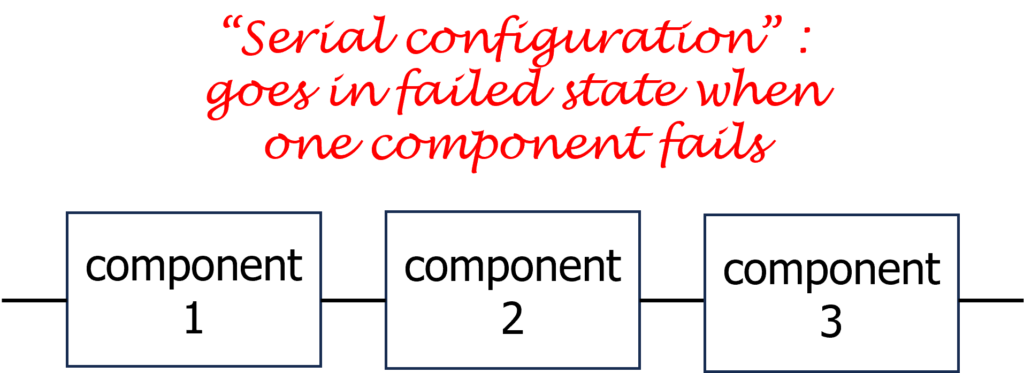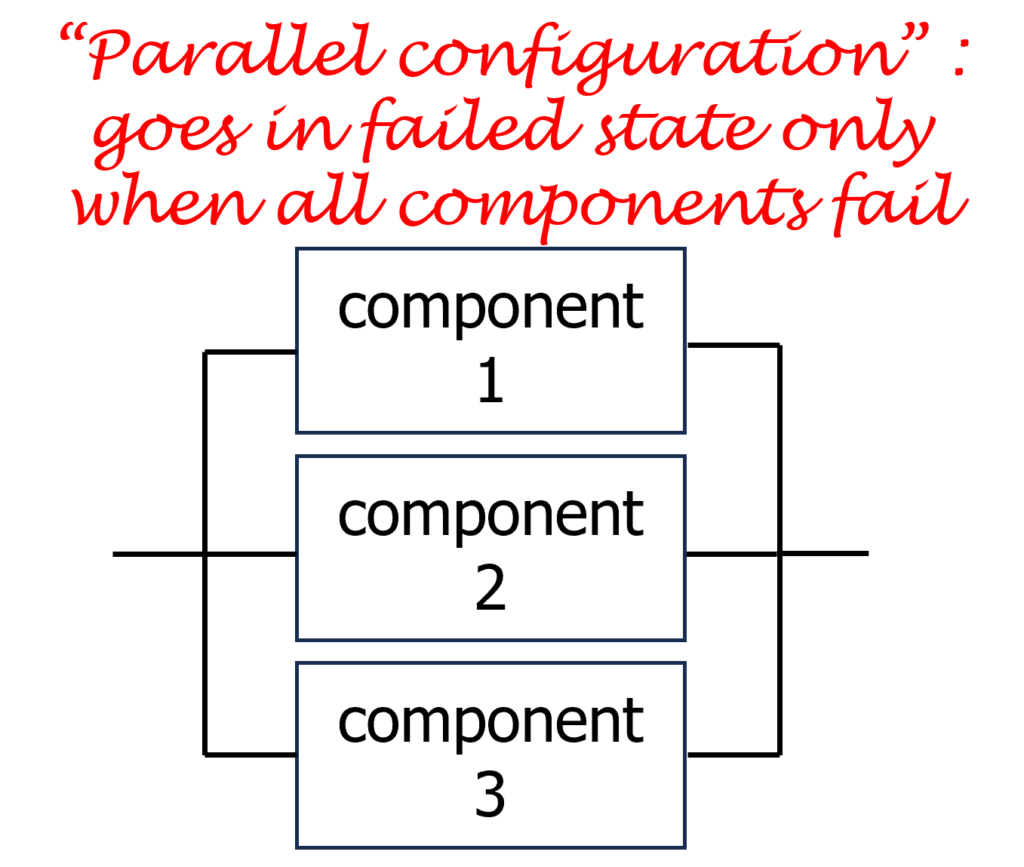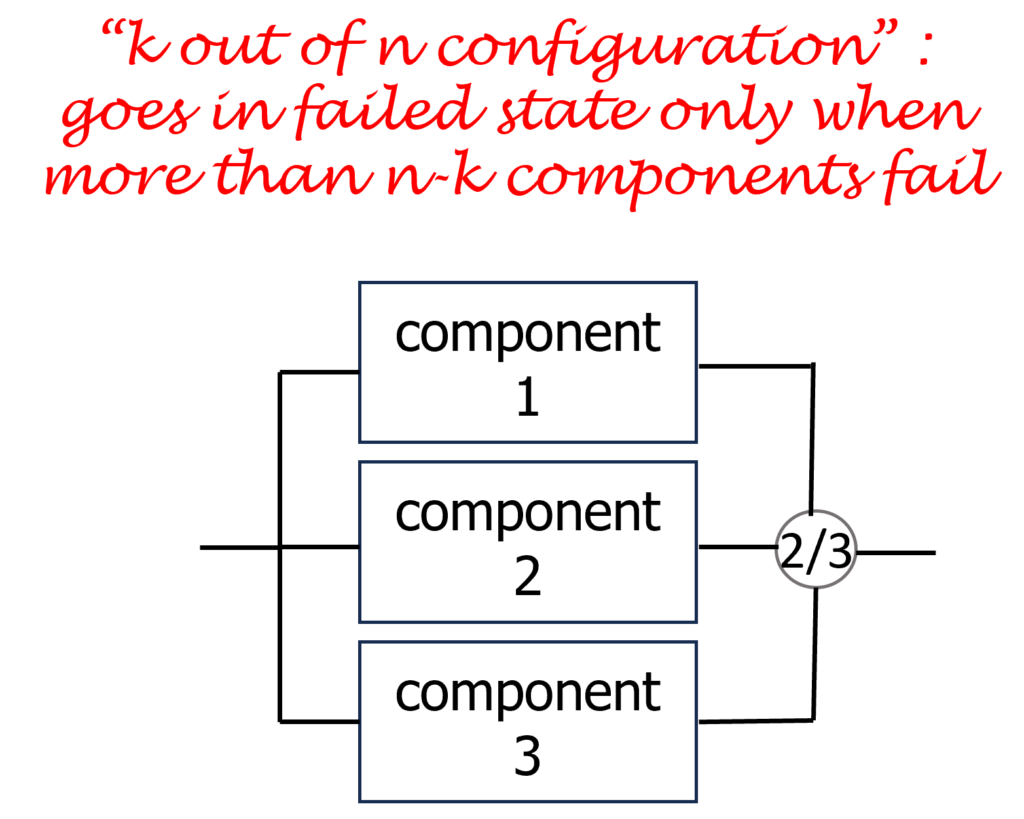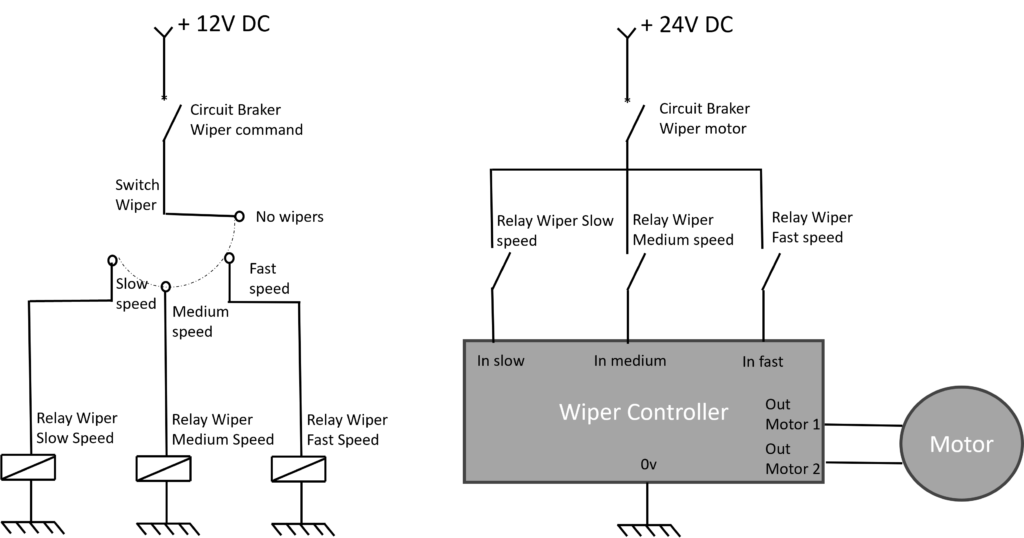
Reliability Block Diagrams
How is system reliability rated?
To assess the compliance of a safety requirement previously allocated to a system, the system must be divided into components, and their failures are studied to infer potential system failures and their frequencies.
When a system lacks redundancies in its design, opting for the Functional Failure Modes and Effects Analysis (FMECA) is a practical choice. This method is straightforward to implement, where each component corresponds to a line, and the sum of all component failure rates yields the system’s failure rate. While this approach is simple and conservative, it doesn’t consider potential redundancies that could enhance the failure rate.
In contrast, for systems with redundant functions, Reliability Block Diagrams (RBD) become crucial for evaluating the impact of redundancies. Implementing RBDs demands a more experienced approach. Mastery of RBD logic gates and calculation methods is essential. Additionally, a comprehensive understanding of the analyzed system is required. Collaborative sessions with designers are conducted to ensure that no misunderstandings or overlooked subtleties could compromise the accuracy of the RBD.
In this section, we will explore the initial steps in comprehending the principles of the Reliability Block Diagram method. Many parallels can be drawn with Fault Tree Analysis, especially concerning redundancies, but the main difference lies in the fact the FTA focuses on the failure rate, whereas the RBD focuses on the reliability. The choice to use the one or the other is free, according to the preferences of the customer, or the conventions depending on the type of industry. The FTA methodology is explained in the reliability section.
Which distribution law shall be used?
In reliability analysis using RBDs, the choice of distribution laws for modeling the reliability of individual components or blocks depends on the nature of the components and the failure patterns observed. I’ll let you have a look on the trials section, if not already done. If you wish to calculate the system reliability manually or with a simple excel sheet, the exponential law will be the easiest choice due to its constant failure rate through time which simplifies a lot the formulas, we’ll see how. Otherwise, use your favorite calculation tool, and it will process the right calculation for you.
What are the principles of Reliability Block Diagrams?
Regarding the component’s configuration, the resulting reliability of a system will be calculated differently. The four most common configurations are:
Serial configuration
If one component fails, all the configuration will fail.

The resulting reliability of the configuration is the product of all the component’s reliability in the configuration.
Here, it is Rconfiguration(t) = Rcomponent1(t) x Rcomponent2(t) x Rcomponent3(t)
Parallel configuration
The configuration does not fail until all the configurations’ components are in a failed state.

The resulting reliability of the configuration is the product of all the component’s reliability in the configuration.
Here, it is Rconfiguration(t) = 1 – ((1 – Rcomponent1(t))x (1 – Rcomponent2(t)) x (1 – Rcomponent3(t)))
K out of N configuration
The configuration operates in the case at least K components are operating, among the N ones.

The simplified formula (valid only if all the components are identical, and their reliability law follows an exponential law with parameter λ) is:

Standby configuration
It is a parallel configuration, but only one component operates, whereas the other ones are switched of in backup, ready to take over in case of failure of the operating one.

In this example, we have Rconfiguration(t) = exp(-λt) (1 + λt + λt^2/2)
How is a reliability calculated on a Reliability Block Diagram?
Let’s consider the following architecture:

Let’s model the reliability of the windscreen wipers:

It is arbitrary considered that having at least one operating speed is sufficient, this criterion is generally contractual.